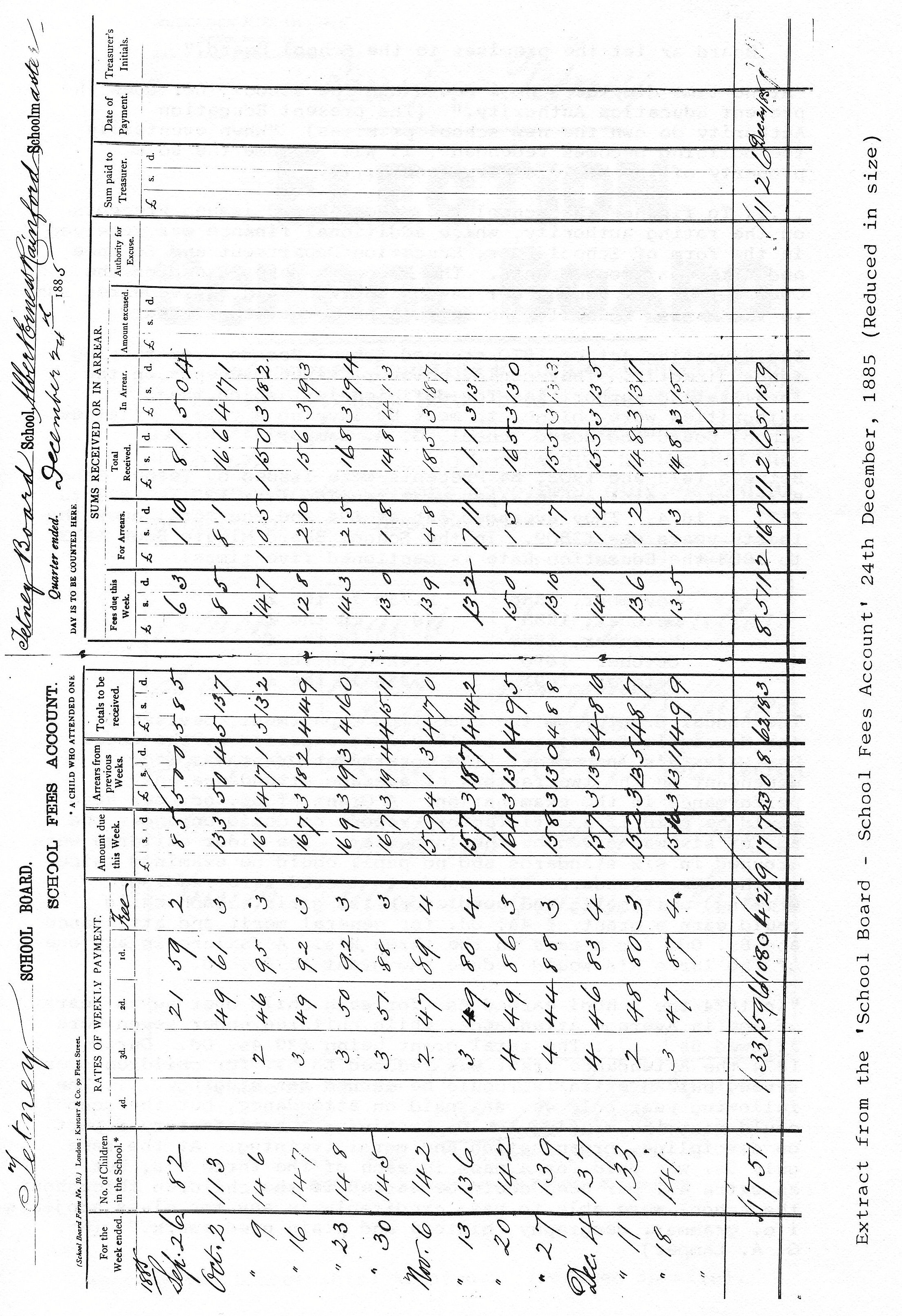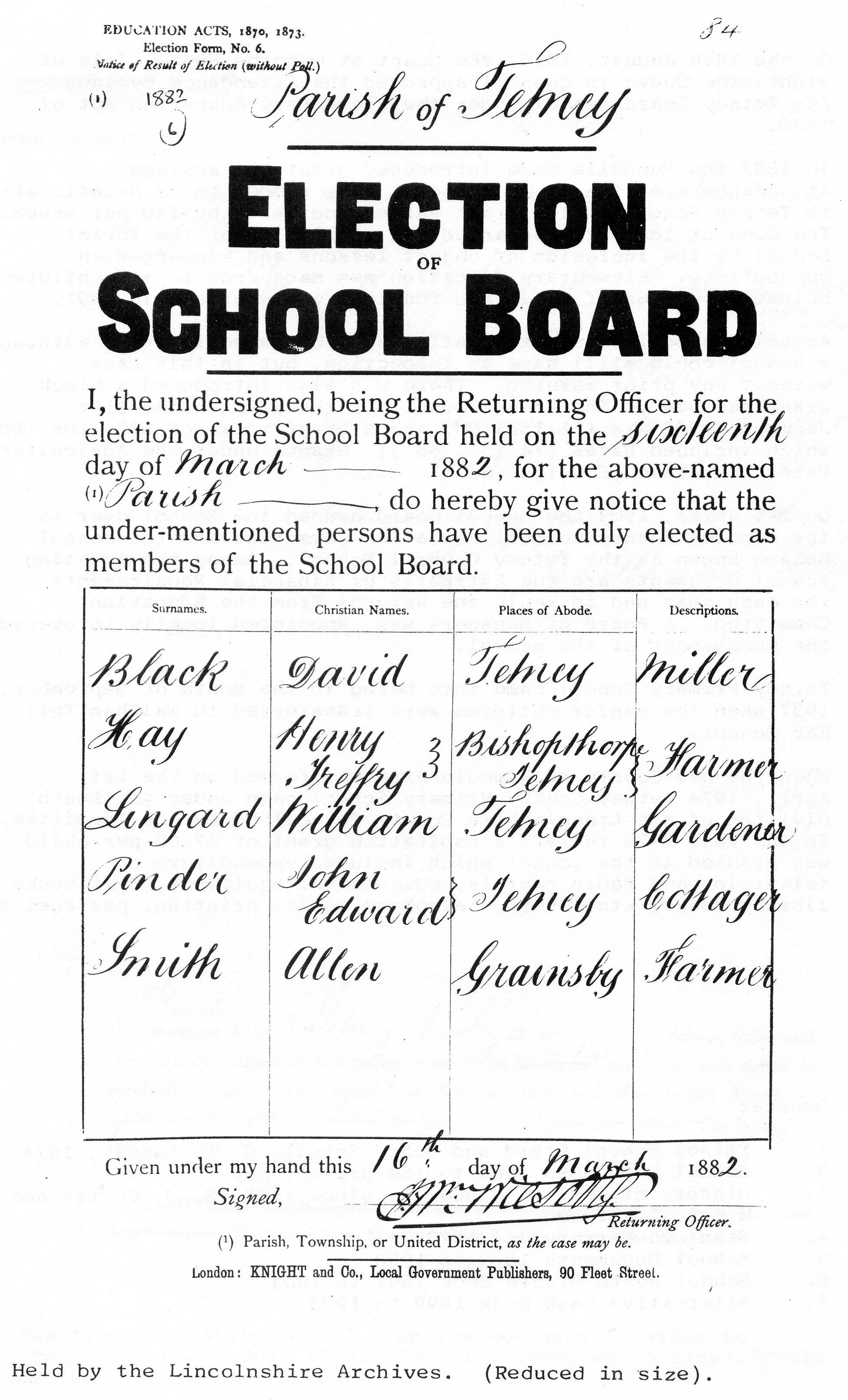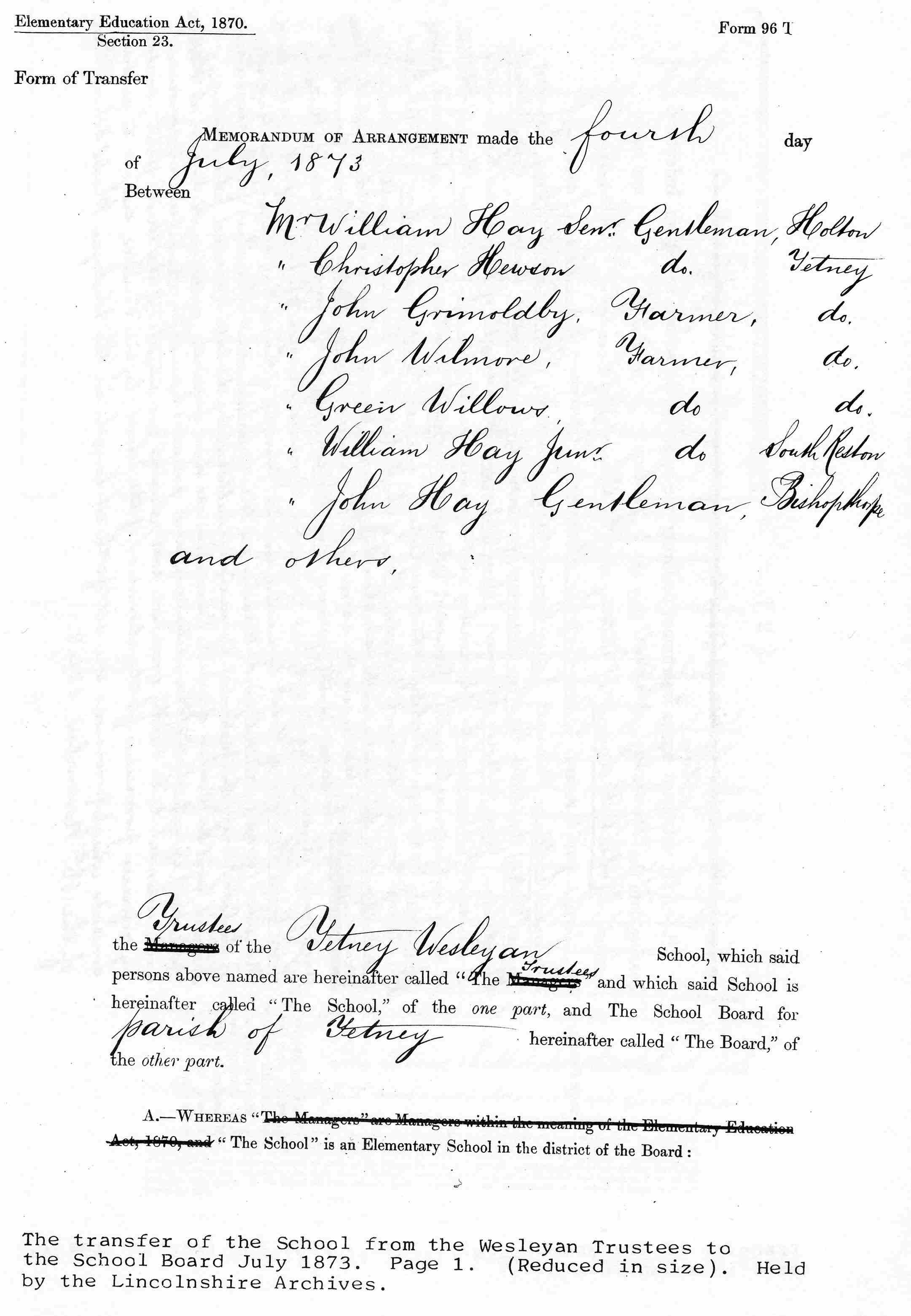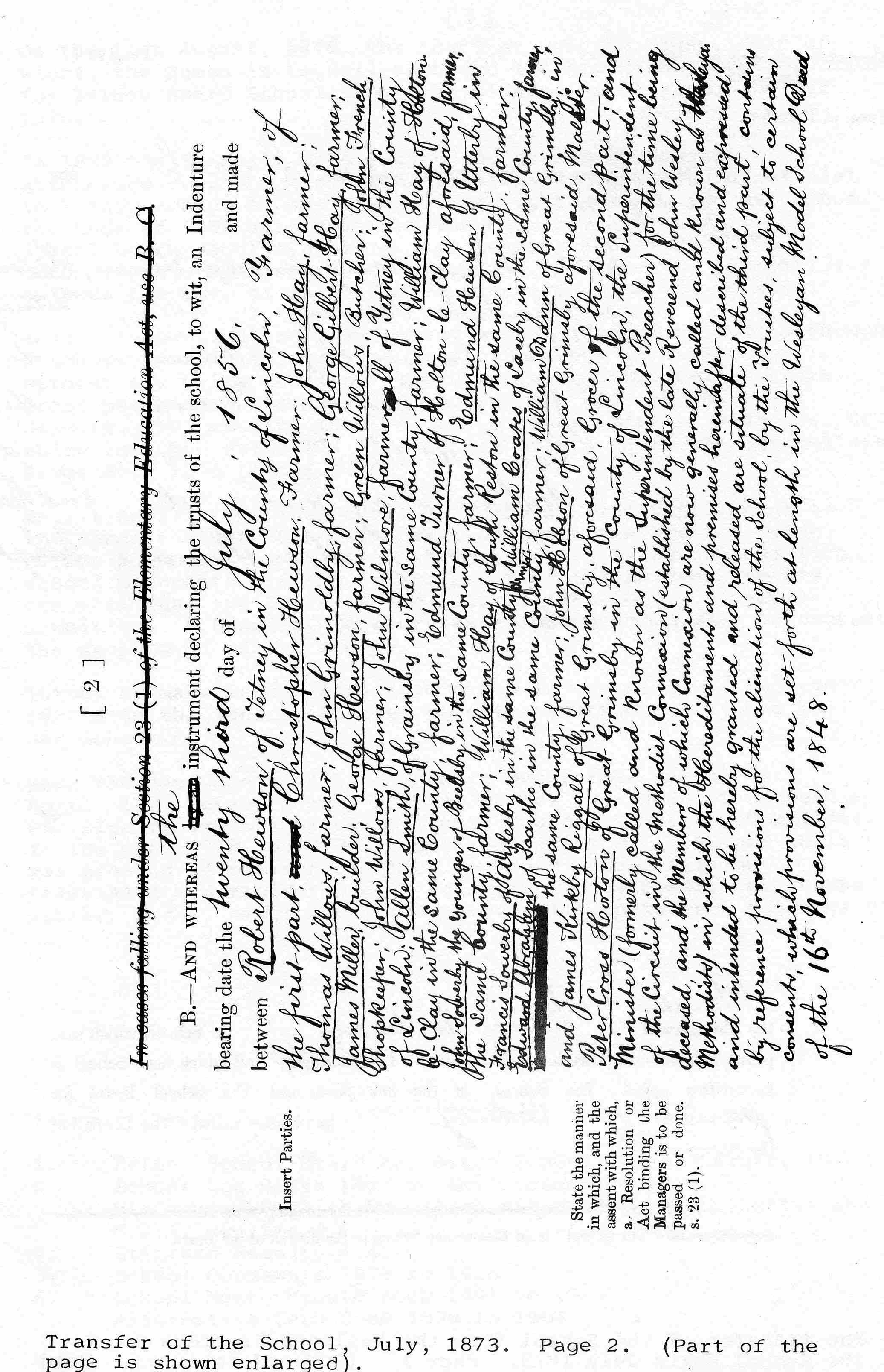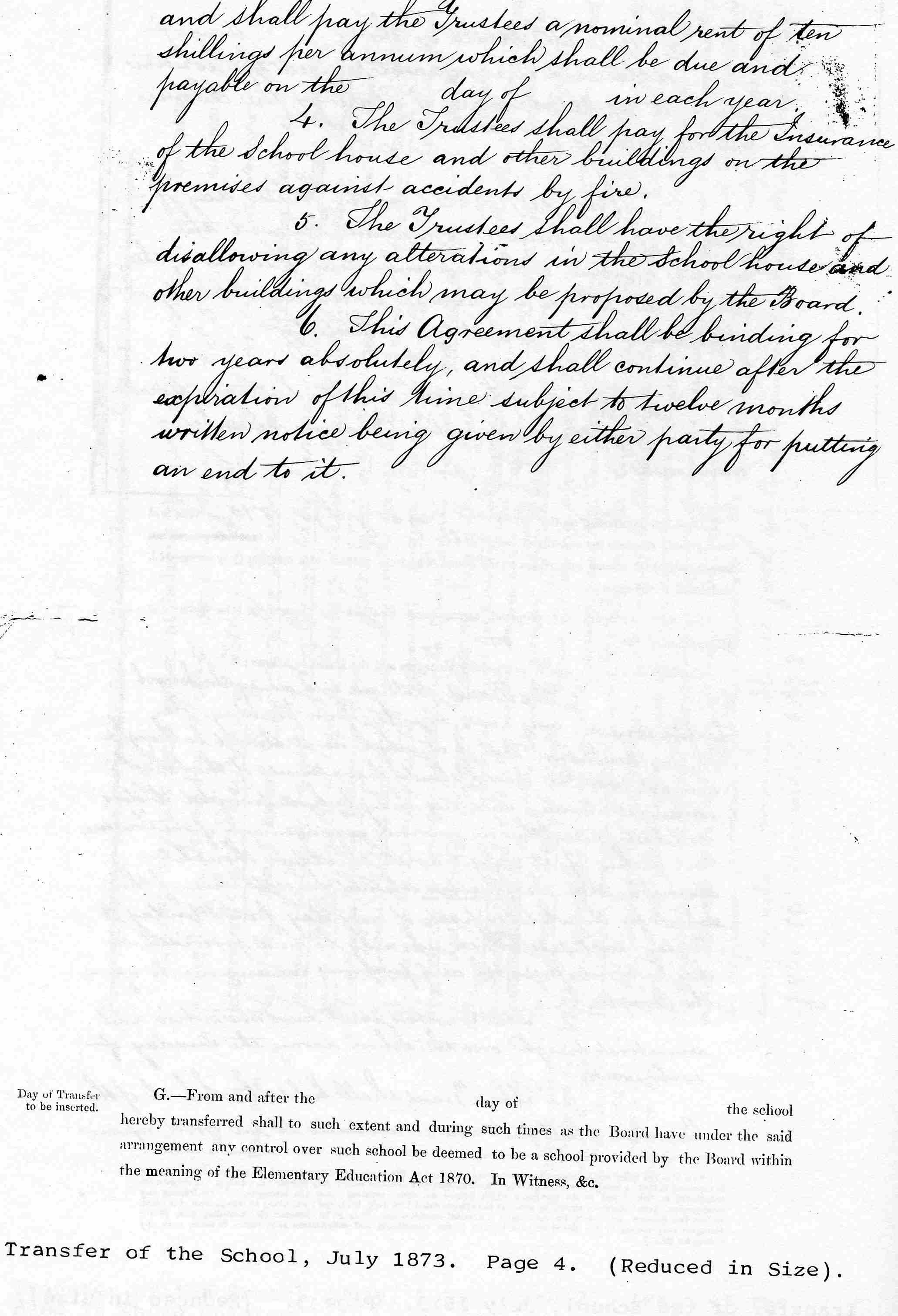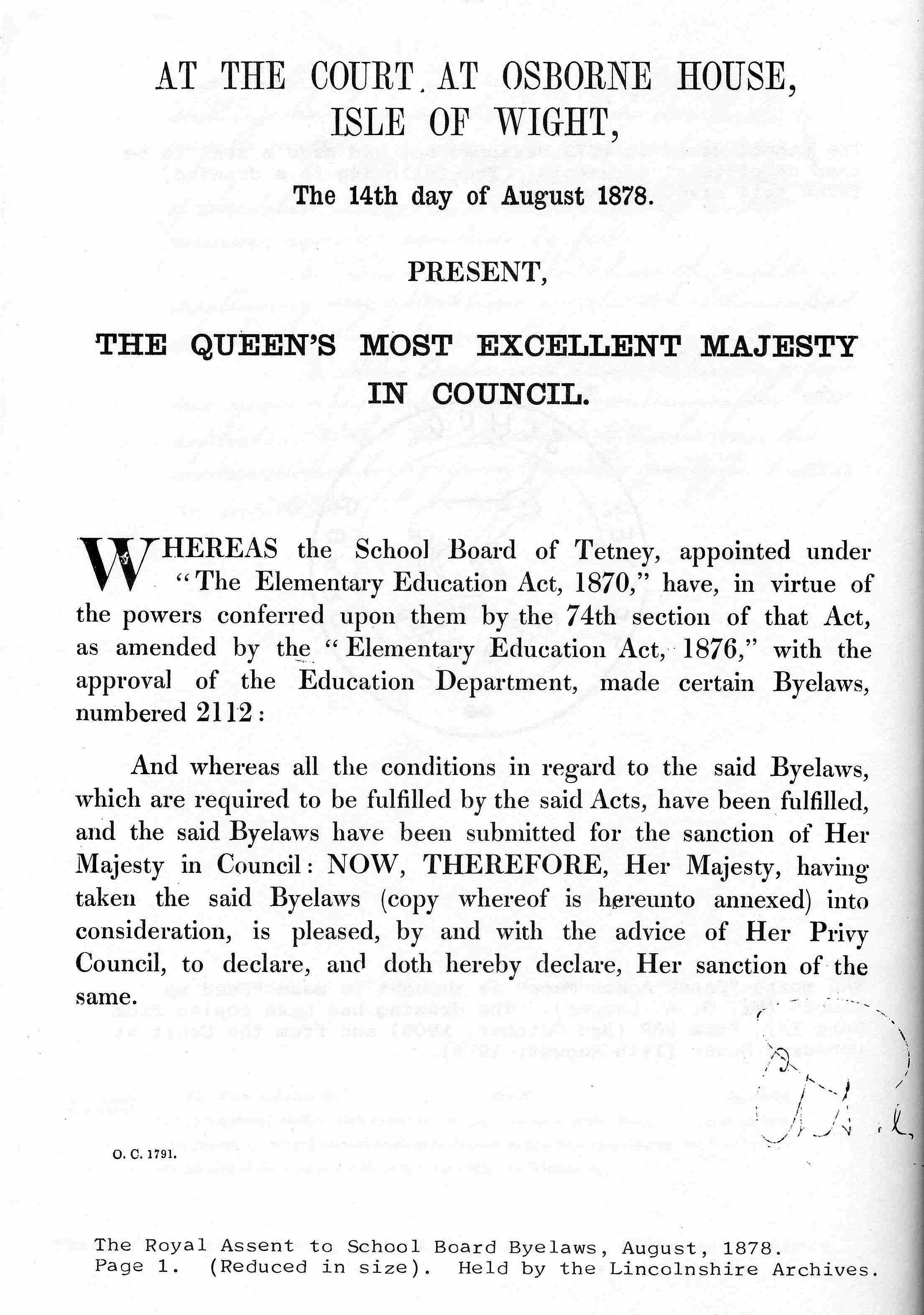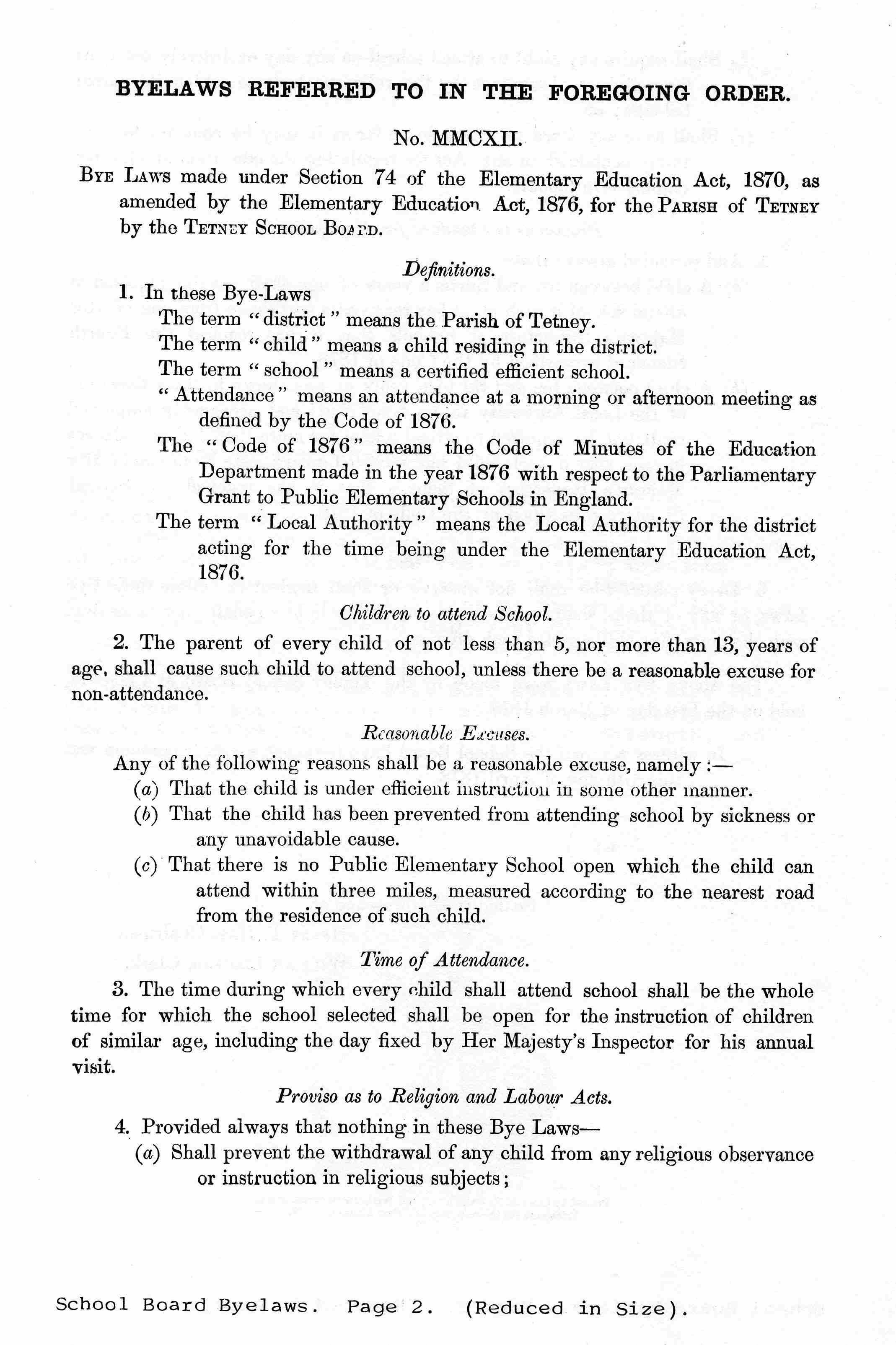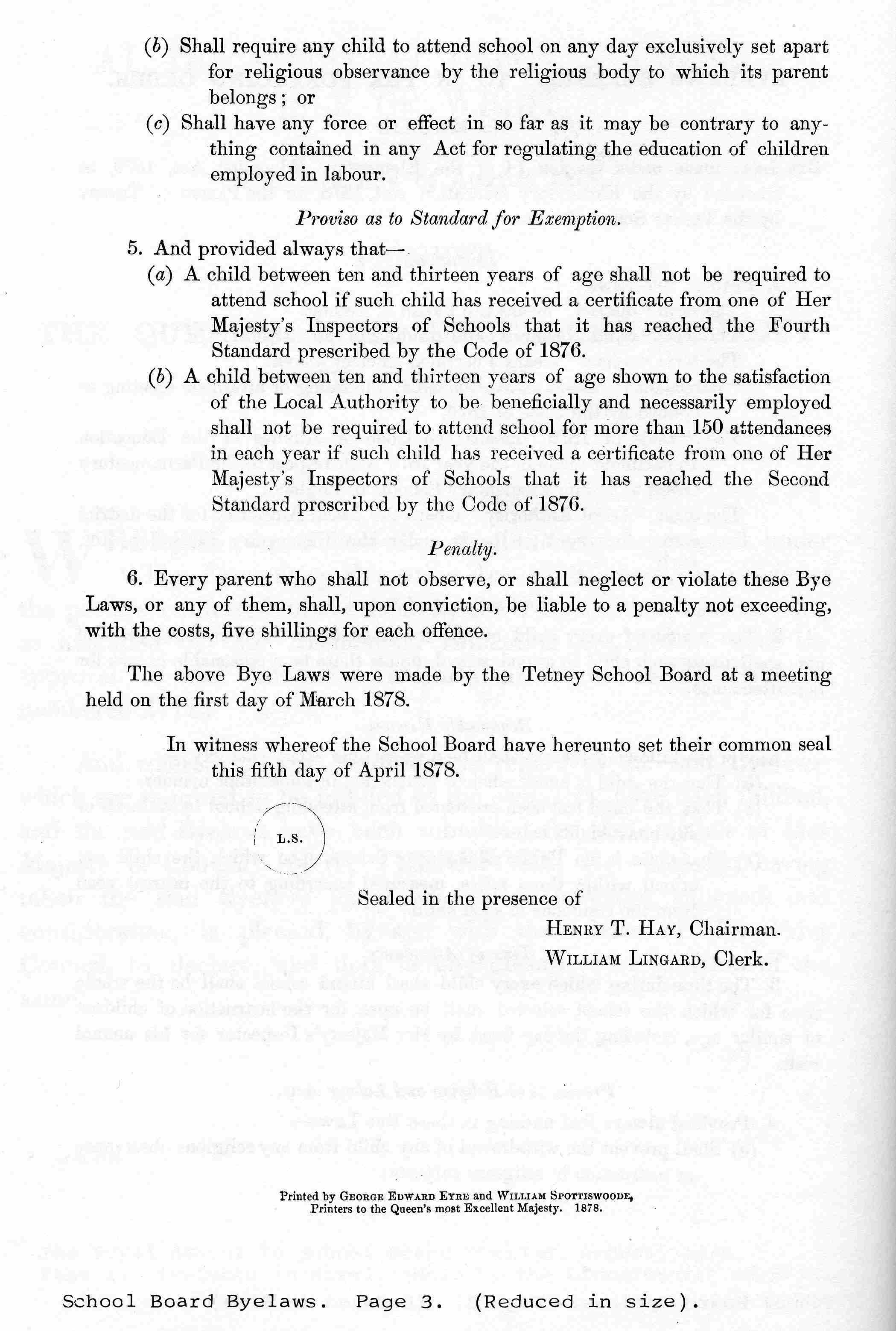Tetney Wesleyan Elementary Day School was run by a group of twenty-three Trustees, eighteen of whom were farmers. The finance to buy the land and to build the school originally came from the Trustees and the people of the village. There was a Government Grant of £318 paid in 1857 towards the cost of providing a school in Tetney.
Under Tobert Lowe's Revised Code of 1862 an annual Grant for the school could be 'won' under the system of "payment by results." The school must have suffered because of low attendances. Often the numbers were below fifty although the school was designed to take 137 pupils.
The parents of the children attending school would have to pay a fee, 2d or 5d. (these figures are quoted in the School Log Book on 5th April, 1869) or more although, before 1873, the exact figures are not clear. The Methodist Educational Provision was supposed to be for the poor but at 5d. Per child this did not work out. A farm labourer would receive approximately 7s. to 9s. (35p to 45p) per week. At 5d. per day the parents would need to pay school fees totalling 2s, Id. (lOp) per week. From the Log Book 1863 to 1872 it is obvious that the Master had difficulty in collecting the fees. The first entry in the Log Book mentioning fees is on the 4th April, 1868, " .... others backward with their fees." The Trustees ran Bazaars and Sewing Meetings to raise money but the combination of poor attendances and the difficulty of collecting fees caused serious financial problems and the staff was reduced to one, the Master.
Although the 1870 Education Act "was not designed specifically to save 'ailing' voluntary schools, it did provide the means by which the school at Tetney could continue to function, i.e. as a Board School. .... It is probable that when the Trustees of the Wesleyan School decided that they could no longer maintain the school in an efficient fashion, and that the transfer of the school to a School Board was the only means of keeping the school open, the Education Department was informed of the situation and the appropriate order was issued for the election of a School Board ....,
..... The first election of a School Board took place on the 25th March, 1873, 'At the close of the poll the number stood thus: J. Hay, 151; G. E. Lamming 110; Rev. J. Wild, 107; W. Lingard, 101; T. Ingemells, 70; R. Hay, not elected, 31' (Stamford Mercury 4.4.1873). The election cost £20 18s. 9d....
... The transfer of the school proved to be a rather complicated affair. Undoubtedly there were three main reasons why the transfer took so long to complete:
(a) The insistence of the Trustees on retaining possession of the buildings and land .....
(b) The sale of the furniture .....
(c) The uncertainty of the Trustees under which section of the Act to transfer the School. "Either give up all rights to the school which would become the property of the School Board or let the premises to the School Board."
"At no time did the School Board own the school, nor does the present Education Authority." (The present Education Authority do own the new school premises) "When eventually the building becomes redundant, it will become the sole property of the Wesleyan Trustees; .....
..... To finance the school the School Board issued Precepts on the rating authority, while additional finance was received in the form of School Fees, Education Department and Science and Art Department Grants. The Precepts were issued on the Overseer of the Louth Poor Law Union, who paid the required sum to the Parish Council, who in turn paid the School Board.
The Education Act of 1870 stopped School Boards from raising funds directly. They could, however, issue Precepts on the local rating authorities for deficiencies, which the authorities were obliged to meet by levying a rate." (Tetney School Board and Board School, G. A. Lamper).
Between 1873 and 1902, 84 Precepts were issued by Tetney School Board with total amounts per year ranging from £35 in 1873 to £177 in 1874. They averaged out at £94 and the total over the thirty years was £2809. In the School Board Minute Book 1873 to 1903 the Education Rate is mentioned five times:
November, 1886 2.75d in the £
October, 1888 4d in the £
November, 1889 3.75d in the £
October, 1890 3.425d in the £
October, 1891 3.25d in the £
The Annual Grant from the Education Department, devised by the Newcastle Commission in 1858, was assessed by the Local Her Majesty's Inspector. The Government Grant was made dependant on the two factors of average attendance and performance in the examination. A Grant of 6s. 6d. per head would be paid if a satisfactory report on children under the age of six was given by the Inspector. The older children were grouped in six standards and no pupil could be examined twice in the same standard. The subjects tested were reading, writing, arithmetic and needlework for girls. Each child could earn a grant of 4s. Od. for general merit and attendance and 8s. Od. for a pass in the three R's. A failure in any one of the three R's would reduce the grant to 6s. 4d.
"In 1874 the school earned 6s. for each child over seven years of age in average attendance, while children under seven were allowed 8s. ..... The total grant being £39 4s. Od. During 1874 the Attendance Grant was reduced to 5s. for children over seven, but an extra Is. could be earned for singing ..... The following year only 4s. was paid on attendance, but the school could earn the missing Is. by receiving a satisfactory report on discipline, organisation and moral training. At the same only 3s. was paid for a pass in each of the three R's, but an extra 4s. per head could be earned if the children throughout the school were able to pass creditably in any two class subjects, i.e. grammar, geography, history and plain needlework." (Mr.G. A. Lamper).
On the 14th August, 1878, the Court at Osborne House, Isle of Wight, the Queen in Council approved the Attendance Byelaws for Tetney Board School under the Elementary Education Act of 1870.
In 1882 the Mundella Code introduced grants on average attendance over the whole school. This tended to be beneficial to Tetney School as the Grant earned increased by £40 per annum. The Code of 1882 also enlarged the curriculum of the Infant School by the inclusion of object lessons and kindergarten occupations. Elementary education was made free to all children between the ages of three and fourteen years of age in 1891.
Annual Inspection and Examination was abolished in 1900, although a school could still have an Inspection, but in this case without any prior warning. There was also introduced a blockgrant per head. The Annual Grant for the year ending 31st January, 1903 was £71 15s. Od. and a grant total of £225 10s. 6d. which included Rates (74 15s. 6d.); Grants under the Agricultural Rates Act, 1896 (£50 10s. 6d.)
On 1st April, 1903 the School Board handed the School over to the Lindsey County Council Education Committee and the school became known as the Tetney Council School. Among the existing school documents are the Estimates of Financial Requirements for each year and in reply the Returns from the Education Committee. A Board of Managers was appointed locally to oversee the management of the school.
Tetney Primary School came into being in the month of September, 1937 when the senior children were transferred to Waltham Toll Bar School.
When the new County of Lincolnshire was formed on the 1st April, 1974 Tetney County Primary School came under the Louth Division of the Lincolnshire County Council Education Committee.
In the year 1978 to 1979 a capitation grant of £7.65 per child was granted to the school which included expenditure on television and radio rentals, educational equipment, text books library books, stationery, telephone calls, printing, postages etc.
Source;
1. Tetney School Board and Board School, G. A. Lamper, 1974
2. School Log Books 1863 to the present day.
3. History of English Education since 1800, S. J. Curtis and
M.E.A. Boultwood.
4. Stamford Mercury 4.4.1873
5. School Documents 1873 to 1938
6. School Board Minute Book 1891 to 1903
7. Alternative Cash Book 1899 to 1903
The School Board in 1873 designed and had made a seal to be used on official documents. The following is a drawingof the seal.

The motto "Pasce Agnos Meos" is thought to mean "Feed my Lambs" (Mr. G. A. Lamper). The drawing has been copied from Form 137, Form 96R (3rd October, 1900) and from the Court at Osbourne House (14th August, 1878).
8th February, 1901
(From the School Minute Book)
Letter to be sent to the King:
"The Members of the Tetney School Board humbly and respectfully desire to present our loyal and heart-felt congratulations on Your Majesty's accession to the Throne
of these Realms. We welcome Your Majesty's Gracious declarations of diligent and zealous fulfilment of the great and sacred responsibilities of the exalted position which, in the Providence of God, Your Majesty has been called, and we pray that Your Majesty's Rule over a loyal and devoted people may be long continued and be crowned with every blessing. We also most earnestly desire that not alone to your Majesty, but also to Your Gracious Queen, Alexandra, may be granted. Health, Strength, and every happiness."
*************
